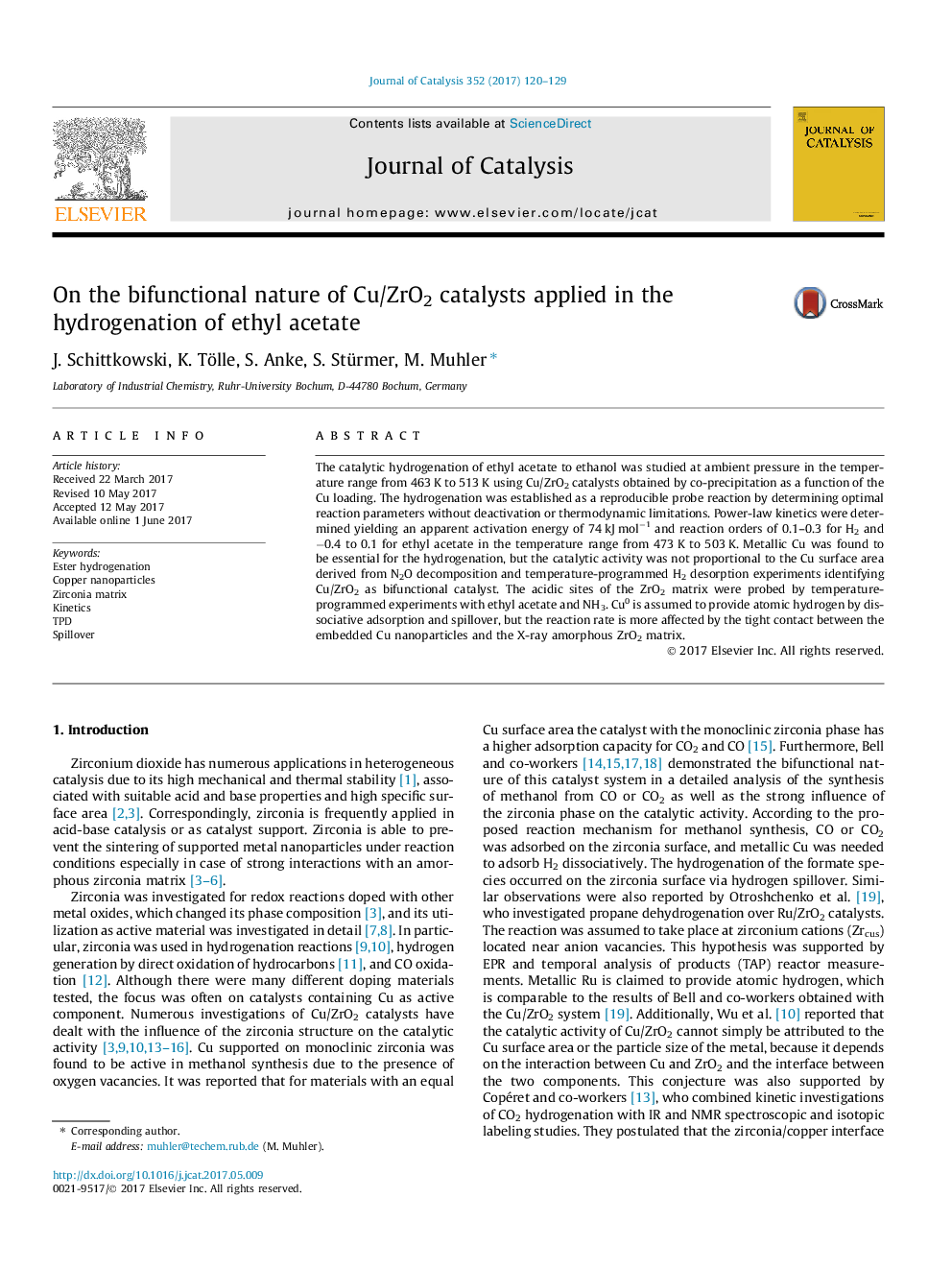| Article ID | Journal | Published Year | Pages | File Type |
|---|---|---|---|---|
| 6455353 | Journal of Catalysis | 2017 | 10 Pages |
â¢Coprecipitation was used to obtain Cu nanoparticles embedded in an amorphous ZrO2 matrix.â¢Power-law kinetics was derived for the hydrogenation of ethyl acetate.â¢Conversion was correlated with the Cu surface area, but not linearly.â¢Dissociative adsorption of the ester on acidic ZrO2 sites was probed by TPD experiments.â¢Just a small amount of metallic Cu is needed for hydrogen spillover.
The catalytic hydrogenation of ethyl acetate to ethanol was studied at ambient pressure in the temperature range from 463Â K to 513Â K using Cu/ZrO2 catalysts obtained by co-precipitation as a function of the Cu loading. The hydrogenation was established as a reproducible probe reaction by determining optimal reaction parameters without deactivation or thermodynamic limitations. Power-law kinetics were determined yielding an apparent activation energy of 74Â kJÂ molâ1 and reaction orders of 0.1-0.3 for H2 and â0.4 to 0.1 for ethyl acetate in the temperature range from 473Â K to 503Â K. Metallic Cu was found to be essential for the hydrogenation, but the catalytic activity was not proportional to the Cu surface area derived from N2O decomposition and temperature-programmed H2 desorption experiments identifying Cu/ZrO2 as bifunctional catalyst. The acidic sites of the ZrO2 matrix were probed by temperature-programmed experiments with ethyl acetate and NH3. Cu0 is assumed to provide atomic hydrogen by dissociative adsorption and spillover, but the reaction rate is more affected by the tight contact between the embedded Cu nanoparticles and the X-ray amorphous ZrO2 matrix.
Graphical abstractDownload high-res image (75KB)Download full-size image
